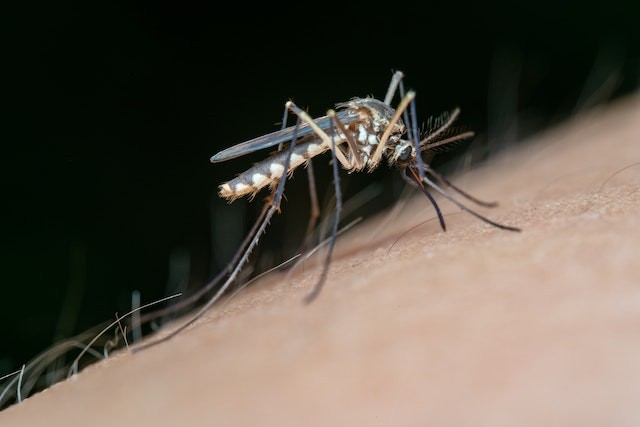Scientists from Martin Luther University Halle-Wittenberg developed a recently new type of insect-repellent delivery device.
As specified in a Phys.org report, with the help of a 3D printer, the active ingredient is first "encapsuled and formed into the desired shape" like a ring for one, which can then be worn, and emits an agent designed to repel mosquitoes for a long time.
Scientists develop a new printable, wearable #insectrepellent https://t.co/bNOwcbbTmE https://t.co/aP7OzQp1O5
— Phys.org (@physorg_com) October 11, 2022
The research team has developed their prototype through the use of "IR3535," an insect repellent developed by MERCK.
Essentially, mosquito sprays that contain IR 3535 are extremely gentle on the skin and have been used worldwide for many years already.
ALSO READ: Invasive Mosquito Species Discovered in South Florida, an Aggressive Biter

A mosquito-repellent machine with a vaporizer, and an anti-mosquito racket are among the effective mechanisms against mosquito bites.
3D Printing Technique
That is the reason agents have been used for experiments, Professor Rene Androsch from MLU explained.
It is typically applied as a spray or lotion and provides long hours of protection. Nonetheless, Androsch and his team are in search of ways to release the agent over a much longer time, like through its encapsulation in a wearable ring or bracelet.
The research team used a special 3D printing technique to insert the insect repellent into a biodegradable polymer in a controlled way and to form the mixture of substances in different ways.
According to Fanfan Du, the study's lead author and a doctoral candidate at MLU, the basic idea is that the insect repellent is continuously evaporating and forming a barrier for insects.
How the Ring Works
In the paper published in the International Journal of Pharmaceutics journal, it was specified that the rate at which the insect repellant is evaporating depends on many different factors, which include temperature, concentration, and the structure of the polymer used.
After conducting several experiments and simulations, the researchers have predicted that the insect repellent needs well over a week to fully evaporate, at a temperature of 37 degrees Celsius, for body temperature.
While the study authors have proven that it is definitely possible to develop a wearable insect repellent, the rings, as well as other forms developed for the study are only prototypes.
Androsch explained that further studies need to be conducted to determine how well the rings are working under actual conditions. Such encapsulation material could be further optimized, as well.
Existing Insect Repellents
Prior to the development of this wearable insect repellent, people were already using other insect-killing mechanisms like plants and other devices.
An Embibe report enumerates citronella, lavender, lemongrass, and marigold as repellent plants ideal for having in every home surrounding and garden.
As for the devices and machines, the same report indicates ultrasonic bug-repellent, a mosquito-repellent machine with a vaporizer, and an anti-mosquito racket are among the effective mechanisms against mosquito bites.
Related information about special mosquito repellent is shown on KSAT 12's YouTube video below:
RELATED ARTICLE: Malaria Transmission: Scientists Engineer Mosquitoes to Slow Growth of Parasites That Cause the Disease
Check out more news and information on Mosquitoes in Science Times.














